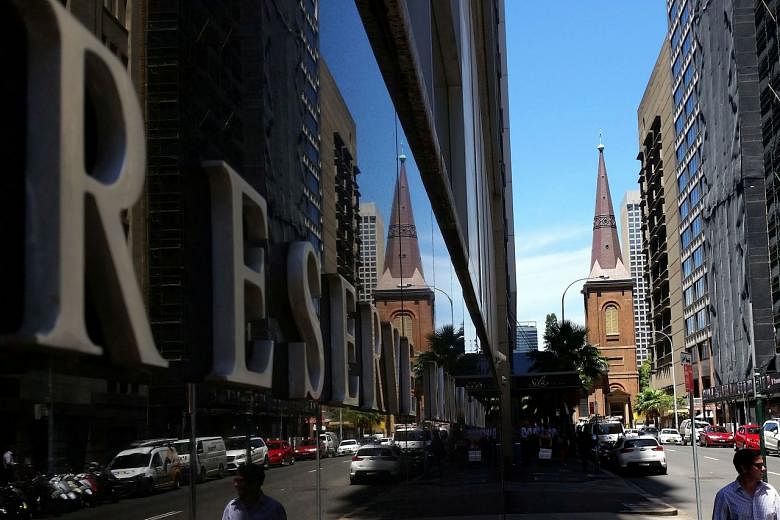SYDNEY (REUTERS) - The Australian and New Zealand dollars were jolted lower on Tuesday (Feb 18) as a production warning from Apple highlighted the mounting economic costs of the coronavirus and spooked investors across Asia.
The Aussie weakened 0.4 per cent to US$0.6687, towards its recent decade trough at US$0.6657. The failure on Monday to clear resistance around US$0.6733 also likely encouraged technical selling of the currency.
The kiwi dollar also weakened 0.4 per cent to US$0.6410, breaching chart support at US$0.6424 in the process.
The lapse came as Apple said it was unlikely to meet a sales target set just three weeks ago amid lost production and weakening demand in China from the outbreak.
The blow to risk appetite saw stocks across the region slip, while safe-haven bonds and the Japanese yen got a lift.
Not lifting sentiment were minutes of the last Reserve Bank of Australia (RBA) policy meeting, which showed the board already considered the virus a "material" threat to the economies of China and Australia.
The central bank chose to keep rates at 0.75 per cent in the hope the impact would be transitory, though analysts were not so confident.
"The minutes are two-week old with further escalation in the virus and impact including greater disruption to supply chains, delayed term starts for Chinese students, and an extension of the ban on arrivals from mainland China," said Su-Lin Ong, head of fixed income strategy at RBC Capital Markets.
She noted the hard data for January and February would not be released until March and April, and it could be mid-year before the actual costs of the epidemic might be known.
"This suggests that there is some risk that our base case for a June rate cut slips in to H2, with a more drawn-out path to terminal cash of 0.25 per cent."
That is one reason why futures imply only an 18 per cent probability of a quarter-point rate cut by April, rising to 52 per cent by June. A move is not fully priced until October.
Much will depend on how the labour market fares, given the RBA has said a marked increase in unemployment could shift the balance of risks toward further easing.
Job figures for January are due on Thursday and economists are tipping a tick up in the unemployment rate to 5.2 per cent, from 5.1 per cent. Anything higher would likely reignite talks of an early rate cut and slug the Aussie hard.
Australian government bond futures benefited from the general mood of risk aversion, with the three-year bond contract up 1.5 ticks at 99.280. The 10-year contract firmed 2 ticks to 98.9550.











